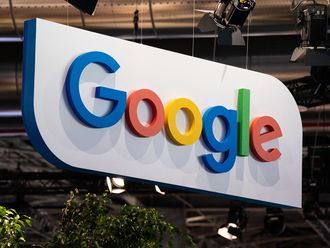Dubai: The public internet is 25 years old. In that time it has evolved from ‘surfing the World Wide Web’ to a complex ecosystem of content and services, hosted on approximately 80 million servers and delivered through an intricate network of cables, mobile networks, and satellites.
As almost half of the people on the planet get online, the endless drive to innovate leads to a continuous evolution of new uses for the internet — from booking a room in a stranger’s house, to live-broadcasting an event to the world from your smartphone, to remotely monitoring a sleeping child.
By the end of 2015, 3.2 billion people globally — 43 per cent of the world’s population — were estimated to be online. This is nearly 1.2 billion people more than when the last internet value chain paper was written in 2010.
Since then, an average of 633,000 people has gone online for the first time every day over the past five years.
According to a report by GSM Association (GSMA), the total value of the internet value chain has almost trebled from $1.2 trillion in 2008 to almost $3.5 trillion in 2015, at an annual growth rate of 16 per cent.
The” internet Value Chain Economics” developed by consulting firm A.T. Kearney for the GSMA showed that the growth has been driven by three powerful factors.
First, there has been a continuous increase in the number of people able to access the internet worldwide via fixed broadband and mobile networks, at ever greater speeds.
Second, the declining cost of internet-capable devices, most notably smartphones, is making it more affordable to get online.
Third, people are using the internet for a wider array of activities and for longer periods of time each day. Demand for online services continues to grow and, in the case of services that operate both online and offline, a greater proportion of transactions is moving online.
John Giusti, Chief Regulatory Officer at GSMA, said that the proportion of revenues of online services generated via advertising (and thus free, or subsidised to some extent, from an end-user perspective) has grown to 29 per cent in 2015, yet the majority of revenues still come from direct customer payments, whether they are one-off purchases, subscriptions, or pay-as-you-go services.
In 2015, online services captured nearly half of the revenues of the entire internet ecosystem (47 per cent, €1.4 trillion).
Although internet connectivity revenue is growing, he said that the proportion of value captured by connectivity players is declining. Connectivity revenue grew from €199 billion in 2008 to €508 billion in 2015, but this represents a smaller share of the of the total internet value chain, declining from 18 per cent to 17 per cent, with a continued slide to 14 per cent expected by 2020.
The report showed that connectivity revenues generated for mobile network operators by increased internet use are not offsetting the decline in revenues from traditional communication services, and mobile data revenues are also forecast to grow at a lower rate than the growth of other segments. These trends pose challenges for investment in mobile networks that support the growth of the internet ecosystem.
“Innovation and technical development still proceed at pace, but the largest players in any given segment deliver higher returns and profit margins. They have secured their leadership position and fewer new players are achieving scale.
“Connectivity is at the heart of the digital ecosystem, but policy and regulatory frameworks have not been modernised to reflect these new market dynamics brought about by the internet,” Giusti added.











